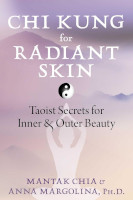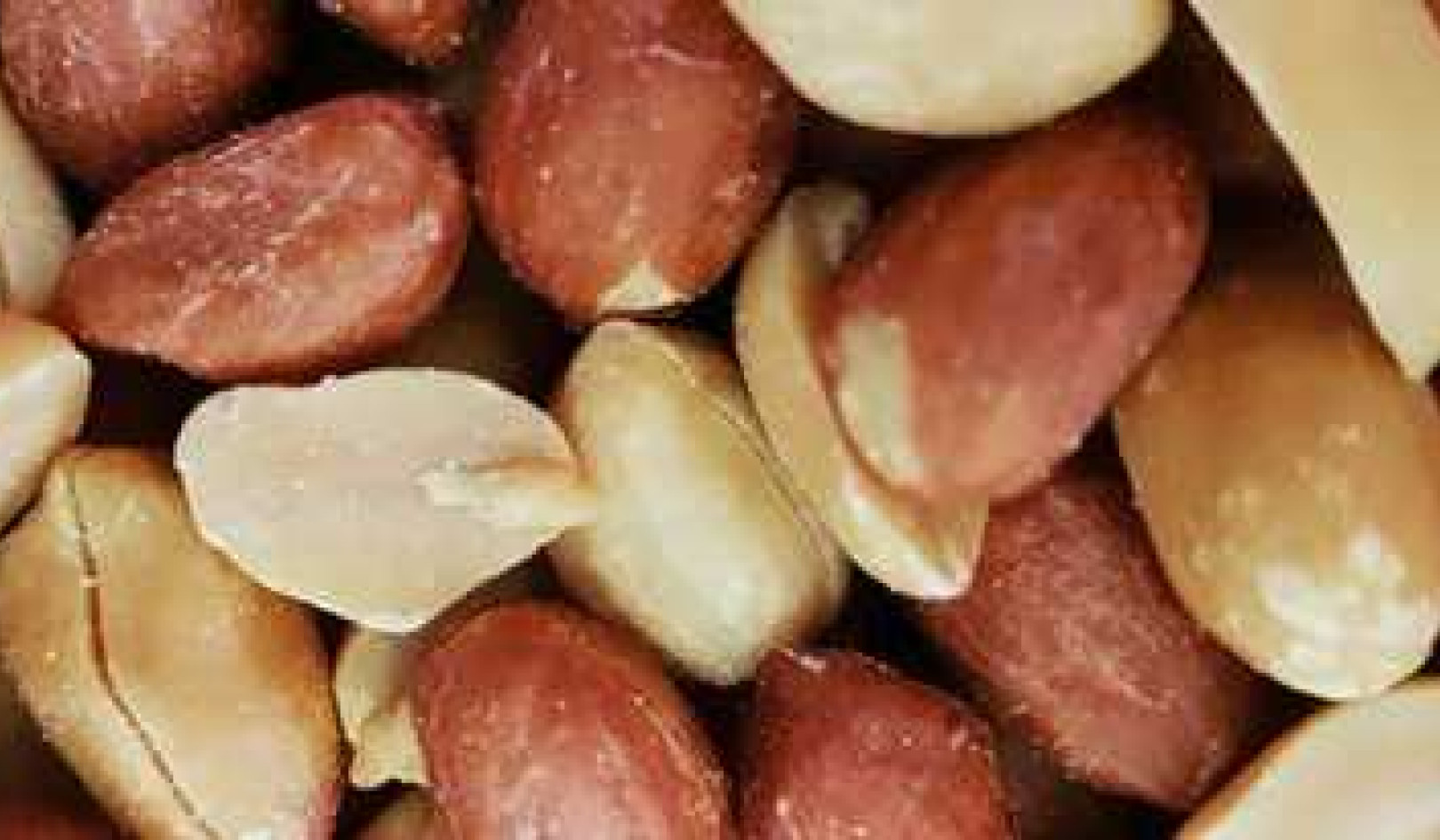
Image by Long Phung
In this Article:
- How emotions and stress impact skin health.
- The physiological effects of negative and positive emotions on the skin.
- How Taoist practices can improve skin health by balancing emotional energies.
- What role "molecules of joy" play in skin radiance and regeneration.
- How can we apply Taoist principles to everyday stress management for better skin health?
How Stress Affects Your Skin: The Science of Emotional Impact
by Mantak Chia and Anna Margolina, PhD.
It is impossible to eliminate all negative emotions. In fact, it would be very unwise. Biologically and evolutionarily, painful and unpleasant feelings are chemical communications from our body to the brain that tell the brain to pay close attention.
For example, fear is an important emotion that keeps us alive by stopping us from doing something dangerous, while physical pain is an important sensation that makes sure we do not ignore an open wound or a broken bone.
Because negative emotions have been so important for our survival, they tend to outweigh positive emotions, and they also grow much faster. Taoists advise maintaining balance by clearing negative emotions daily.
In the Taoist tradition, negative emotions are comparable to weeds in the garden that do not need help to grow, while positive and virtuous emotions are like flowers that require love and care to grow.
The Key to Youth, Radiance, and Longevity
Taoist masters discovered that balancing the emotional energies in the body is the key to youth, radiance, and longevity. Since negative emotions are very easy to come by, they have to be regularly released from the body, as holding on to negative emotions indefinitely will accelerate aging and make the body more vulnerable to illness.
On the other hand, positive emotions are often short-lived and need to be nurtured and replenished.
The Physical Results of Holding on to Negative Emotions
-
Chronic muscle tension: In addition to creating an unpleasant personality mask, unprocessed negative emotions can create chronic muscle tension that blocks energy flow and impedes skin circulation. On a systemic level this tension interferes with breathing and energy flow throughout the body.
-
Inflammation: Negative emotions that are not released from the body have been linked to chronic, low-grade inflammation in tissues. The term inflammaging describes the process of aging caused by chronic inflammation. Chronic unhappiness and stress creates inflammation not only in the skin, but in all the organs and organ systems.
-
Impeded regeneration: Chronic stress and anxiety depletes the body’s energy reserves, restricts breathing, and constricts skin capillaries, impairing circulation.
-
Diminished radiance: When people are wrapped up in negative thoughts and emotions, it blocks the skin’s luminosity. Words such as gloomy, dreary, shadowy, and drab describe the grim state of skin when there are persistent negative emotions. This may be the result of the combined effects of insufficient hydration caused by blocked circulation, low oxygen, and blocked energy flow.
Molecules of Joy
Taoist masters long ago discovered what we all know intuitively: positive and happy feelings have rejuvenating and invigorating effects on the body, while negative, toxic emotions, when their chemistry and energy accumulates in the body, can make a person sick and accelerate aging. Every emotion in the body has a unique chemical signature that determines its physiological effects.
Emotions can be compared to prescriptions the mind gives to one’s inner pharmacist. Some of them, such as joy, love, and gratitude, are like invigorating elixirs and vitamins. Others, such as sadness, anger, and fear, are like bitter medicine that may be necessary for survival, but should not be taken indefinitely because of their side effects.
The skin is affected by more than a hundred neurochemicals that are released in response to all the various emotions. The “happy” ones are oxytocin, serotonin, dopamine, and the endorphins. Researchers have found that they are responsible for producing a youthful, luminous, vibrant, vital state of being, and this is reflected in the skin.
Of the three endorphins found in humans, beta-endorphin, a peptide produced in the central and peripheral nervous systems (including the neurons of the skin) has a broad spectrum of physiological activity that affects mood, immune function, and pain level. The nervous system releases beta-endorphin when people are in love or feel pleasure, and also, paradoxically, in response to an injury, pain, and UV radiation.
The reason beta-endorphin is released in response to pain is because it reduces pain. This is why those who have just suffered a serious accident often report euphoria in the immediate aftermath and not being aware of any pain until much later. Skin cells have receptors for beta-endorphin and therefore are affected by this regulatory peptide.
Beta-endorphinhas a unique ability to stimulate an increase in the amount of nitric oxide in the body. This is a chemical compound that relaxes muscles in the blood vessels, opening them to flow, and this creates an instant beautifying and illuminating effect.
The reason beta-endorphin can instantly illuminate the skin is because its radiance greatly depends on the condition of the capillaries. In young skin, arterial capillaries in the upper dermis form a dense layer of capillary loops. In one square millimeter of skin on the face, there could be up to 150 such loops.
When light penetrates the epidermis and reflects this dense pillow of coiled blood vessels, it reflects back to the observer and creates that magical glow of youth. With age, and especially if a person is chronically stressed, the tiny capillaries in the face become smaller and thinner until they disappear altogether. The skin can still receive blood because of the presence of the larger blood vessels, which become even larger to compensate for the loss of small capillaries.
As the damage from UV radiation and inflammation caused by stress and toxins creates low-grade chronic inflammation, the blood vessels in the skin may start forming spiderlike structures that lead to uneven redness of the skin. So instead of that smooth, uniform, rosy glow of youth, as we age we tend to develop red spots on the cheeks and chin, redness of the nose, and visibly enlarged veins under the skin.
Beta-endorphin and other biologically active molecules that are produced when we are happy and joyful (often described as “feel-good molecules”) are the biological key that opens the way for the skin’s regeneration.
Stress and the Skin's Capillaries
When the body is under stress and is in fight-or-flight mode, it directs blood and energy to the arms and legs as an evolutionary strategy for either fighting or running away, and to do so it constricts the skin’s capillaries. This prevents excessive bleeding in case of an injury, but it also shuts down the skin’s regeneration capabilities. Once the danger has passed, the body releases happy molecules so they can reopen the skin’s capillaries and restore blood flow to the skin.
This is why those who are chronically stressed have a noticeable lack of radiance to their skin. Practices that help us switch off the fight-or-flight alarm and allow us to release happy chemistry cause the deep capillary loops in the dermis to relax, which allows the skin to rejuvenate. If you can keep your skin relaxed and saturated with molecules of joy, they will preserve and enhance your radiance.
Today many companies are marketing skin-care products that promise stimulation of feel-good chemicals in the skin. Such products may contain cacao oil, Dead Sea salts, Panax ginseng, or other herbal extracts. However the best and surest way to increase feel-good chemistry in the skin is by cultivating positive emotions. In the Taoist tradition, intentional laughing and smiling into one’s own organs are the foundational practices for health, beauty, and rejuvenation.
Other chemicals that have a positive effect on the skin are dopamine, which is produced when people feel good about their achievements; oxytocin, which is a love and bonding hormone; and serotonin, which is a pleasure, happiness, and relaxation hormone. They are all molecules of joy because when people feel loved, accomplished, happy, and relaxed all at once, they often describe this state as joy.
Children naturally experience joy as their default state of being. A child may feel angry, frustrated, sad, afraid, or upset in the moment, but once the situation improves, they quickly return to joy and radiance. In contrast, most adults find joy a very rare guest.
The Human Mind Can Create Love, Joy, and Happiness
Taoist masters of old discovered something that the modern personal development movement realized only in the second half of the twentieth century: the human mind can intentionally create love, joy, and happiness instead of waiting for external circumstances to get better. The formula for issuing such a happiness “prescription” for the skin includes physical relaxation, mindfulness, and creative visualization.
Taoist masters teach that emotional energy is quite real. Science confirms that thoughts are clouds of electromagnetic energy resulting from electricity moving through the physical “wires” that are the body’s nerves. When the electromagnetic current moves through the nerves, neurons release neurochemicals, which produce physiological effects.
What people perceive as an emotion is actually e-motion—energy in motion. Every emotion is a wave of chemical, physical, and physiological change in the body. Visualization becomes actualization when it moves electromagnetic energy through the body and creates neurophysiological changes.
Copyright ©2024. All Rights Reserved.
Adapted with permission of the publisher,
Destiny Books, an imprint of Inner Traditions Intl.
Article Source:
Book: Chi Kung for Radiant Skin
Chi Kung for Radiant Skin: Taoist Secrets for Inner and Outer Beauty
by Mantak Chia and Anna Margolina, PhD. Exploring skin renewal, the authors detail the practice of Stem Cell Chi Kung, showing how hydration and vibration can activate stem cells to support deep and extensive renewal of the skin’s surface. They also look at several of Master Chia’s classic Universal Healing Tao breathing and circulation practices that can help support inner and outer beauty.
Exploring skin renewal, the authors detail the practice of Stem Cell Chi Kung, showing how hydration and vibration can activate stem cells to support deep and extensive renewal of the skin’s surface. They also look at several of Master Chia’s classic Universal Healing Tao breathing and circulation practices that can help support inner and outer beauty.
Revealing how to cultivate not only physical but also spiritual beauty, this Taoist guide to energetic skin care presents powerful and effective methods for achieving youthful radiance and glowing health at any age.
Click here for more info and/or to order this paperback book. Also available as a Kindle edition.
About the Authors
Article Recap:
This article delves into the significant impact of emotions on skin health, explaining how negative feelings like stress lead to inflammaging, while positive emotions promote regeneration and radiance. It outlines Taoist strategies for balancing emotional energies to maintain skin health, emphasizing the role of joy-inducing activities in enhancing skin appearance. The piece also discusses how practices such as mindfulness and visualization can transform our emotional landscape and thereby our skin health, encouraging readers to embrace these ancient wisdoms for modern benefits.



 Mantak Chia, a student of several Taoist masters, founded the Healing Tao System in North America in 1979 and developed it worldwide as European Tao Yoga and Universal Healing Tao. He has taught and certified tens of thousands of students and instructors from all over the world and tours the United States annually, giving workshops and lectures. He is the director of the Tao Garden Health Spa and the Universal Healing Tao training center in northern Thailand and is the author of 50 books, including Taoist Foreplay, Inner Smile, Cosmic Fusion, Sexual Reflexology, and the bestselling The Multi-Orgasmic Man. Visit the author's website:
Mantak Chia, a student of several Taoist masters, founded the Healing Tao System in North America in 1979 and developed it worldwide as European Tao Yoga and Universal Healing Tao. He has taught and certified tens of thousands of students and instructors from all over the world and tours the United States annually, giving workshops and lectures. He is the director of the Tao Garden Health Spa and the Universal Healing Tao training center in northern Thailand and is the author of 50 books, including Taoist Foreplay, Inner Smile, Cosmic Fusion, Sexual Reflexology, and the bestselling The Multi-Orgasmic Man. Visit the author's website:  Anna Margolina, Ph.D., is a scientist, spiritual teacher, and Chi Kung and Universal Healing Tao instructor. She has a master’s degree in medical biophysics and a doctorate in biology from the Russian Medical State University, Moscow. For more than 20 years she has worked as an adviser for cosmetic companies in the United States and Israel. Author's website:
Anna Margolina, Ph.D., is a scientist, spiritual teacher, and Chi Kung and Universal Healing Tao instructor. She has a master’s degree in medical biophysics and a doctorate in biology from the Russian Medical State University, Moscow. For more than 20 years she has worked as an adviser for cosmetic companies in the United States and Israel. Author's website: 




















